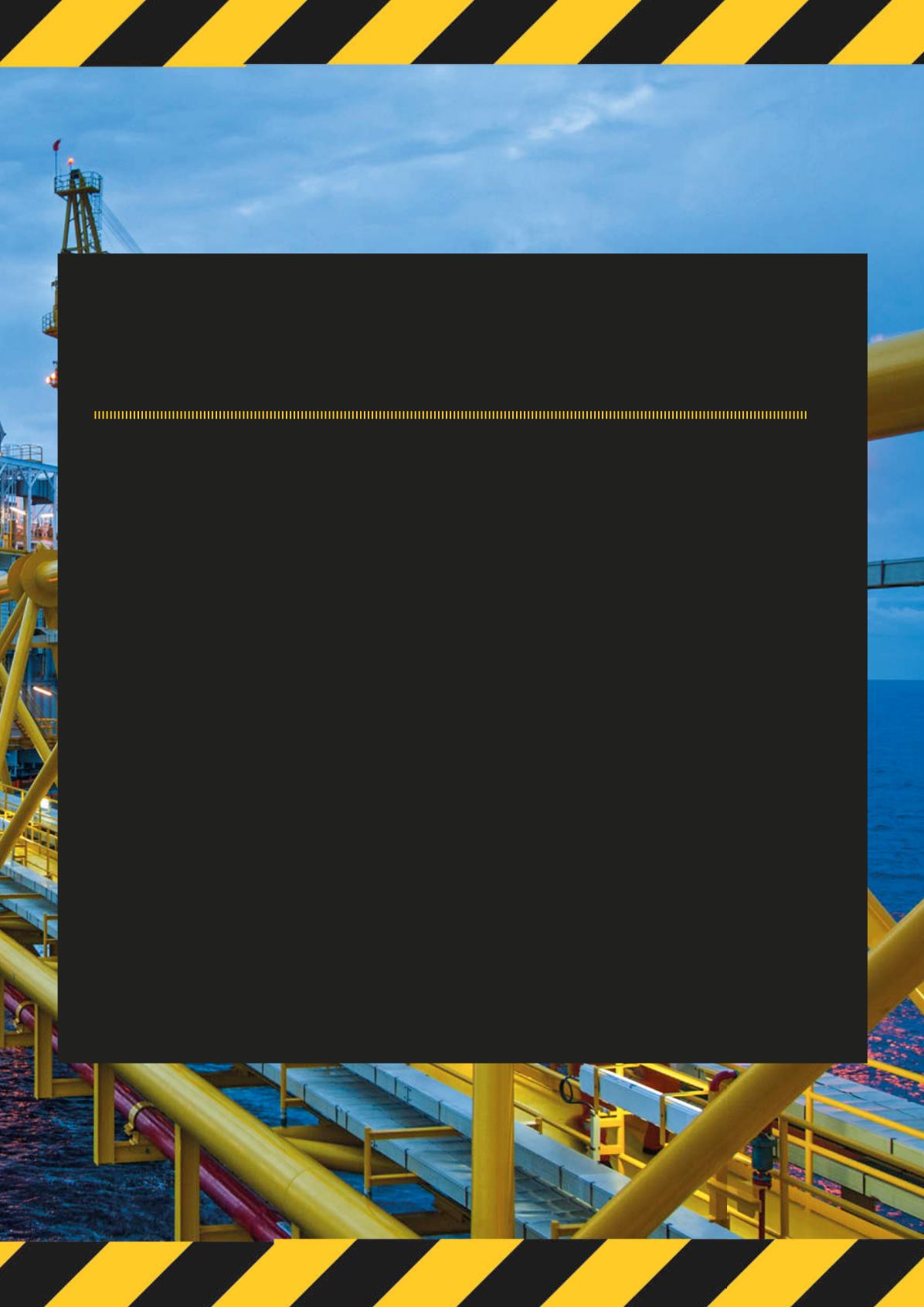
Donald Young, Hoover Container Solutions, USA, highlights ways in which
innovations in offshore equipment design and environmental initiatives
are helping to improve the safety of personnel and the health of the environment.
W
hether operating in the North Sea, Gulf of Mexico, or
offshore Trinidad and Tobago, in the offshoremarket
there is a persistent preoccupation with health, safety,
and environmental issues. Hoover Container Solutions has been
giving particular focus to the offshore sector in order to develop a
range of mud skips, offshore sub baskets and an environmentally
friendly scheme for offshore waste disposal that address a number
of safety and environmental problems commonly encountered in
this sector of the industry.
Disposing of drill cuttings, safely
In the process of offshore drilling, a large amount of by-product in
the formof oil or water-basedmud is generated, whichmust be
disposed of properly. Hoover has developed amud skip for use in
handling this cuttings waste offshore, and is deploying it in various
applications in the North Sea. Uniquely, this mud skip has been
designed with an innovative sliding lidmechanism, in contrast to
themore conventional two-hinge latch design. The purpose of
the sliding lid is tominimise the risks involved with operating and
working withmud skips in a challenging offshore environment.
Thesemud skips aremuch safer than the latch-designed skips,
because there is no risk of trapping or crushing hands when lifting
the lid if it falls. A handle is used to safely open one of the lids on
themud skip for loading, exposing half of the skip and allowing it
to be filled withmud, and the handle is used again to close it. The
process of closing the skip takes only five seconds (a quick process
in the event that weather conditions suddenly change), and the
skip can then be shipped back onshore. Finally, in order to empty
the contents of the skip, the corresponding sliding lid is opened.
Throughout the whole process, there is zero need for employees
to stand or walk on top of themud skips to access them; they can
operate the skips from the rig floor, thus eliminating the risk of
falling.
Additionally, in road transport and warehouse storage, themud
skips are stackable, with two pins on the top of the skips marrying
with two holes on the bottom. The skips were also designed with
a particular maximum capacity inmind, sincemost offshore rigs
have a weight limit on their cranes for lifting, and limited space for
equipment on the rig floor.
The safety benefits of the sliding lidmud skips have global
potential, and the skips are suitable for distribution all over the
world, with orders already being dispatched to Australia, Malaysia,
Brazil and the UK. In locations such as Australia, the general
concept of employing amud skip to handle drill cuttings at all is an
environmental benefit that is not widely adopted by the industry.
Globally, drill cuttings disposal is highly regulated, and they must,
by law, be brought back to shore and treated. This process is
monitored from start to finish. In some areas, there is the option
to dispose of the water-based but not oil-based cuttings; in other
areas cuttings can be dried and the solid part disposed, leaving
only the liquid part to bring back to shore. However, in some
countries there is zero disposal of cuttings allowed. Hoover’s supply
HEALTH, SAFETY
AND THE
OFFSHORE ENVIRONMENT
|
17


